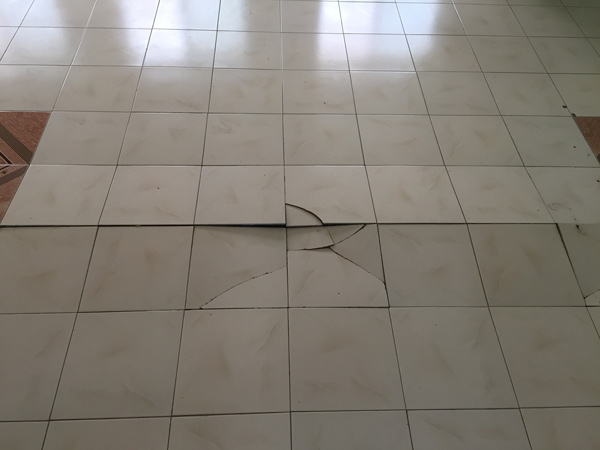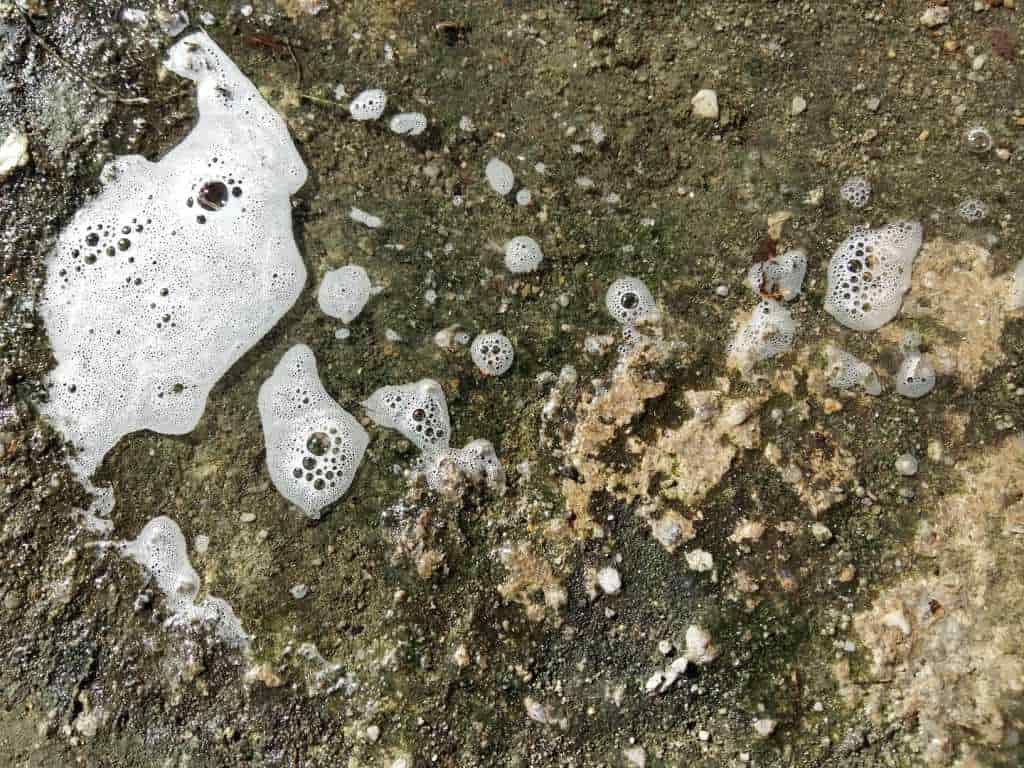When choosing flooring for their house, people always search for how can the chosen tiles affect the aesthetic look of their house or living premises. Nowadays, tile flooring is one of the most popular flooring options due to its sleek appearance and aesthetic appeal. Apart from the all the good things, tile needs proper installation and care during and after its installation. If you do not give proper attention during and after tile installation, various defects might appear on the tile surface with passage of time and exposure to environment, some of these are – i.e. bucking or popping up of tiles, cracking of tiles, fading of tiles, etc. Among these, pop up or tenting or buckled tiles is one of the most common tile’s defect that has been observed in the floor tiles installed in various areas exposed to versatile environmental factors.
What is Buckled or Popped Up or Tented Tiles?
When your floor tiles lift from their originally installed position and start pushing other tiles against one another, it creates a ‘tent-like’ bump in your floor. This tile defect is known as buckled tiles. This defect is also known as pop up tiles or tile tenting. Buckled tiles defect might appear in all types of tiles, i.e. ceramic tiles, vitrified tiles and porcelain tiles, etc. if proper care is not taken while laying the same. The perfectly flat tiled floor may buckle up in the different seasons due to temperature variations, improper installation of tiles and various other factors.

Reasons for Buckled Tiles or Pop Up Tiles Defect
Buckled tiles or pop up tiles defect may occur due to the following reasons:
01. Improper Cleaning
- It is always advisable to clean your tiles properly before its installation. As a consequences, the improper cleaning of the floor does not support the uniform bonding layer. Eventually, It might result in the form of popped up tiles.
02. Floor Expansion
- Tile is a permeable material, hence after some time, it may swell with high moisture absorption. Due to expansion, the pressure may cause the tiles to pop up and therefore the tiles may develop tent, i.e. say buckle.
03. Uneven Subfloor
- Uneven subfloor is also one of the reasons for buckled tiles or popped up tiles. The uneven subfloor will not have uniform bonding with adhesive or mortar with tiles and the subfloor. This will lead to tile tenting making the tiles appear uneven and unpresentable.
04. Improper Set Tiles
- Large or over sized tiles require a certain troweling technique to ensure that they achieve a strong bond with the adhesive. All tiles need a gentle whack with a wooden object when being installed to set them in the adhesive.
05. Not Using Adhesive
- The tiles which have been installed without adhesives may also cause buckling of tiles.
06. No or Incorrect Movement Joints
- According to the Beaumont Tiles, “Incorrect installation of movement joints also leads to the buckled tiles.” The tiles will also buckle in absence of joints between tiles. We have already written article on movement joints, which you can refer over here, Expansion Joints in Tiles: Reasons & Consequences!
07. Using Poor Quality Bonding Agent
- When the tiles those are fixed with the bonding agent to the floor, the underlying substance may not form a secure bond. Due to slight changes in the environmental conditions like a change in temperature or humidity, the bond will lose its grip and the defect of buckled tiles may appear.
08. Using Poor Quality Tile Adhesive
- If the area of the floor is directly exposed to sunlight and if poor quality adhesives are used, then there are chances of tile tenting or popping up of tiles. The direct sunlight will lead to expansion of the tiles. Hence, if adhesives are not strong, the tile might pop up and buckle.

09. Improper Bonding Material
- Use a strong and high quality bonding material. If a dry powder bonding agent is used, you should check whether it is properly mixed or not?
10. Using Old Tiles
- Using old tiles may also cause the tile floor buckling. Old tiles may get brittle. As with passage of time, they lose flexibility and are not able to with stand changes due to temperature variation.
11. Bent Tiles
- Sometime, the manufactured tiles are already bent. So, if you are using such tiles, there are chances of tiles to pop up more often.
Why Tile Tenting Occurs After a Number of Years?
According to the Tile Council of North America (TCNA), tile tenting is a function of three variables:
- The rate of concrete shrinkage
- The shear strength of the thinset, and
- Any extensive forces applied to the tile layer like heat and moisture absorption, etc.
- If the tile is poorly bonded, the tile can tent very quickly. If there is a strong bond, often the grout will compress before the tile will lose its bond.
- When tile fails with a loud sound, it indicates that a good bond was present. Frequently, either the tile or the concrete will be without thinset residue as if the thinset (mortar with adhesive) was not applied correctly.
During an interview with Shri Shekhar Parikh, the Director of M/s. Sthapati Designers & Consultants Pvt. Ltd., he said that buckling of tiles is very common and it can be avoided, if proper joints are provided between the tiles. Most of the time, this process is not followed which in turn leads to buckling of the tiles.
In short, every tile installation should allow for movement. Properly designed installations, where expansion and contraction do not create shear forces, should have no problem for the tile to stay well adhered and remain perfect even after periodic time exposure.
Here’s a video to sum up all the points mentioned above:
Summing it up, the above is a list of a few contributing factors which leads to a defect named “buckled tiles or pop up tiles or tented tiles.” You therefore have to consider the workmanship during the installation, the type of materials you are using, the surface on which you are going to install the tiles, use of skilled labour, etc. If all considerations are taken into account, there is no reason the tiles should buckle or pop up. Ultimately, properly laid tiles give elegant look to your home and also offer safety to the occupants of the house.



